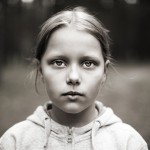
Everyone who read the extracts from Michael Schofield’s memoir, published by the Guardian on January 19th, must surely have been moved by the sometimes harrowing description of his daughter Janni who was diagnosed with child-onset schizophrenia aged just 7 years old.
Janni is an exception, as schizophrenia generally starts between the ages of 15 and 35 in the 1% of the population who have the condition over a lifetime.
Care of children and young people with psychosis and schizophrenia has been patchy in the past and there are a number of health inequalities that exist in this group. The illness is not always diagnosed early on and so effective treatments are often delayed, which can have a huge and sometimes lifelong impact on the young service user and their family.
The new NICE guideline contains a number of key priorities for implementation, including recommendations relating to:
- Referral from primary care for possible psychosis
- Treatment options for symptoms not sufficient for a diagnosis of psychosis or schizophrenia
- Referral from primary care for first episode psychosis
- Treatment options for first episode psychosis
- How to use oral antipsychotic medication
- Treatment of subsequent acute episodes of psychosis or schizophrenia
- Education, employment and occupational activities for children and young people with psychosis and schizophrenia
The headline recommendations are:
- GPs should refer patients who present with psychotic symptoms or other experiences suggestive of possible psychosis without delay to a specialist mental health service
- Specialist services include Child and Adolescent Mental Health Services (CAMHS) for those up to 17 years of age, or an early intervention in psychosis service for those 14 years or over, which includes a consultant psychiatrist with training in child and adolescent mental health
- Children and young people with a first presentation of sustained psychotic symptoms lasting 4 weeks or more should also be referred urgently from primary care to a CAMHS or an early intervention in psychosis service
- Cognitive behavioural therapy (CBT) should be offered instead of antipsychotic drugs for children and young people with psychotic symptoms or mental state changes that are not sufficient for a diagnosis of psychosis or schizophrenia
- Oral antipsychotic medication should be offered to children and young people with an acute exacerbation or recurrence of psychosis or schizophrenia, in conjunction with psychological interventions (family intervention with individual CBT)
- Before referral for hospital care, healthcare professionals should consider alternative care within the community wherever possible, especially when the inpatient unit is a long way from where the patient lives
Professor Tim Kendall who facilitated the guideline development group said:
There are some groups of young people who are especially prone to breaking down into a psychosis; and when they seek help, we can now say that antipsychotics should not be given to them.
Instead, CBT for the family and the individual has the greatest chance of preventing high risk young people from converting to psychosis.
We are also much clearer about the place of antipsychotics in the treatment of psychosis and schizophrenia: these drugs have quite severe side effects and need to be used with caution, especially in the young as the side effects can be especially severe. This guideline has really improved our confidence in what we should and shouldn’t do.
The guideline recommendations have been incorporated into a NICE pathway (if you’re that way inclined) and there’s the usual range of implementation tools and resources available on the NICE website for readers who want detailed documents such as Treatment manuals for CBT for children and young people with psychosis or schizophrenia.
Links
Psychosis and schizophrenia in children and young people: recognition and management (PDF). NICE CG155, 23 Jan 2013.
Psychosis and schizophrenia in children and young people overview. NICE pathway, Jan 2013.
Aripiprazole for the treatment of schizophrenia in people aged 15 to 17 years (PDF). NICE TA213, Jan 2011.
Schofield, M. January First: A Child’s Descent Into Madness And Her Father’s Struggle To Save Her. Guardian Books, 2013.

There’s a summary of the NICE guidance in the BMJ: http://www.bmj.com/content/346/bmj.f150?etoc=
Neuropsychiatric symptoms of B12 Deficiency/Pernicious Anaemia occur anywhere below 500-550 pg/mL so it would be nice if this vitamin deficiency was ruled out before any other interventions occured. Anaemia, which most doctors look for, is a late-stage symptom at very low levels of B12.